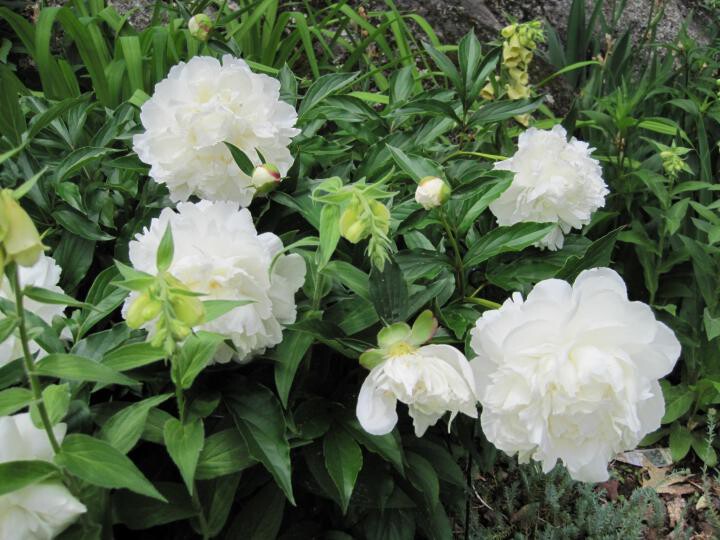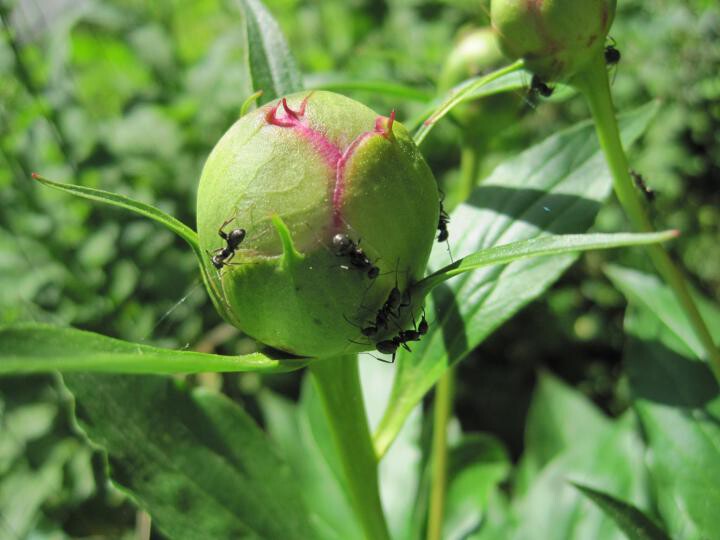SHARE:
One of the most magnificent mainstays of the garden is the common herbaceous peony (Paeonia lactiflora). See six reasons why peonies should be in your garden—plus excellent tips on planting and caring for these beauties. (Don’t forget to support their heads!)
6 REASONS WHY PEONIES SHOULD BE IN YOUR GARDEN
1.Peony plants are so long-lived that it is commonly said that peonies will outlive the gardeners who plant them! If a peony is well situated and happy, it may bloom for 100 years or more with little or no attention.
2.Peonies also thrive almost anywhere in the country. Many varieties can even survive a Zone 2 winter (that’s a low of -50 degrees F).
3.Even when they are not in bloom, their dark green, glossy foliage and shrub-like appearance make them handsome focal points in the garden.
4.Peony plants are virtually pest-free—deer and rabbits don’t like their bitter taste.
5.Showy and fragrant, peonies will also make excellent cut flowers!
6.While September is the best time to divide or plant bare root peonies (since they are dormant in the fall), container-grown peonies can be planted almost any time. If you are looking longingly at your neighbor’s peonies and wishing you had some right now, go for it!
Many nurseries offer early, midseason, and late blooming varieties, making it possible for you to stretch out the peony season over many weeks. There are 6 flower types to choose from: anemone, single, Japanese, semi-double, double, and bomb. The colors range from pristine white to pink, peach, yellow, magenta, deep reds, and even bi-colors.

Fragrances vary as well—some plants such as ‘Festiva Maxima’ and ‘Duchesse de Nemours’ have intoxicating rose-like scents while others are lemony or have no scent at all. If fragrance is important to you, give them the sniff test before you buy.
5 TIPS FOR PLANTING PEONIES PROPERLY
1.In choosing a spot for your new peony to grow, make sure it will get lots of light—6 to 8 hours of full sun is best for producing a profusion of flowers but it will still perform well in a location with morning sun and light afternoon shade.
2.Peony plants will need well-drained, neutral soil away from competing tree roots. This plant will grow to cover an area about 3 feet in diameter so make sure you give it plenty of room. Once planted it can remain undisturbed for many years as long as it is flowering well.
3.Planting depth is critical; if planted too deeply it won’t bloom. When planting a container-grown peony, cover it no deeper than it grew in the pot.
4.Try not to disturb the rootball or damage the feeder roots. A newly planted peony can take up to 3 years to reach its full flowering potential but once established, this plant likes to be left alone.

Seeing ants on your peony buds? Don’t worry! Ants love to harvest the sweet sap covering the flowers buds but are harmless and may even keep other insects away.
SUPPORTING PEONIES
Peonies need support while growing due to their heavy flowers and brittle stems of the larger flowering varieties. Peony rings were invented for just this purpose or you can use a wire tomato cage. Placing the support around the plants early in spring is ideal so you don’t accidently pierce the crown.
Many of the newer hybrids are being developed with stronger stems to eliminate this problem and single, anemone, or semi-double flowering varieties usually don’t need staking.

The plant will grow up through the support and eventually hide the wire.

5 TIPS ON CARING FOR PEONIES
Deadhead peonies after they finish flowering. The petals will brown which isn’t attractive. Cut the stem underneath the old bloom, leaving the foliage alone.
Wait until the fall to cut back the foliage to discourage overwintering of pests.
Mulch new plants with evergreen boughs or salt marsh hay after the ground freezes.
The only serious problem peonies ever get is “botyrtis,” a fungal disease can be avoided with good air circulation around the plant. Signs of botrytis are blackened buds and stems. Cut off and dispose of any affected areas (in the trash, not in your compost pile). If you plant properly and avoid crowding, you shouldn’t have this problem.
Peonies can be susceptible to powdery mildew in late summer but do not worry. The white, powdery mildew fungus may not be pretty but it seems harmless. Better air circulation can avoid mildew.
If you share my passion for peonies, get out there and enjoy them! Pick lots of of bouquets to perfume the house! Like all good things, peony blossoms won’t last forever and you don’t want to miss a minute!